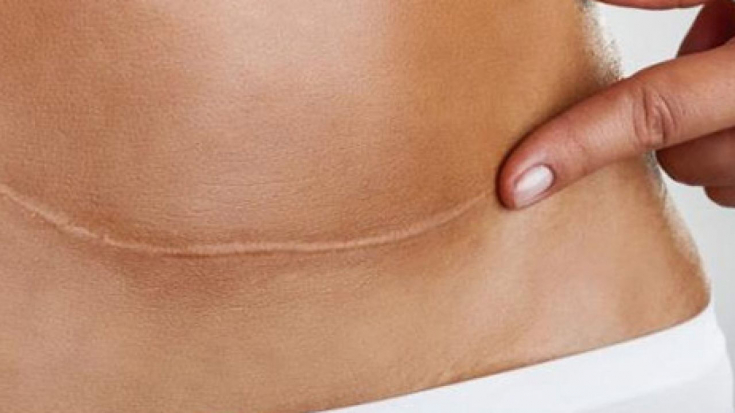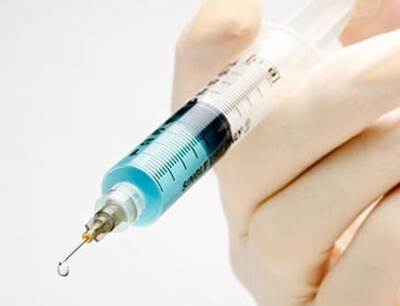Keloid scar – quite a serious and unpleasant problem for many people. The saddest thing about the formation of keloid scars – it is prone to proliferation and recurrence. Surgical interventions, industrial and domestic injuries – any violation of the integrity of the skin can lead to the development of keloids.
Despite many years of experience and the efforts of modern science, the problem of scar treatment and the achievement of a clinically and aesthetically significant result is still far from being solved.
Read in this article about the causes, development, treatment and prevention of keloid scars.
- Etiology and pathogenesis of keloid scars: predisposing factors
- Keloid Varieties: True, False
- Keloid Scar Treatment: The Latest Techniques and Treatments
- Prevention of Keloid development
Etiology and pathogenesis of keloid scars: predisposing factors
Keloid scar – this is an excess growth of fibrous tissue that occurs at the site of an injury, such as a laceration, surgical scar, acne, sometimes appears spontaneously. Keloid belongs to the group of pseudotumor fibromatoses.
Follow us on Instagram!
There is still no consensus on the etiology and pathogenesis of keloids. Of the general factors, the leading role is played by genetic predisposition, race, the state of the immune system, followed by hormonal imbalance and blood type.
The formation of keloid scars is based on a violation of the processes of synthesis and degradation of collagen at all stages of scar formation.

The histological basis for the development of a keloid scar is an excess of dermal collagen types I and III and myofibroblasts, which produce a large amount of biologically active substances. As a result, regeneration processes are disrupted, numerous signals are sent back to these cells to stimulate wound healing processes, and the activity of factors that control excessive division of connective tissue cells slows down.
Australians are more prone to keloids, while albinos do not develop keloids. The development of scars is also affected by dysfunction of the endocrine glands, in particular the genital, thyroid, parathyroid, thymus glands and adrenal glands.
Varieties of keloids: true, false
Distinguish between true keloid and false or scarring. Acne keloid are allocated to a separate group. True keloid occurs spontaneously, for no apparent reason, on previously undamaged skin.
False keloid scars are most often formed after burns, injuries, including surgical interventions, and also as a complication of various inflammatory processes in the skin. Both types of keloid scars in appearance and histological picture are very different from other pathological formations in the skin with which they are proposed to be differentiated: dermatofibroma, dermatofibrosarcoma protruding, lipoma.
Read also: Acne scars in modern cosmetology – problem solved
Keloid scars protrude sharply above the surface of the skin, are pink, reddish or purple-red in color, can be shiny, smooth, hard. Fibrous formations can rise above the surface of the skin by 0.5 cm or more. Usually keloids do not cause pain, but the sensitivity in this area can be increased.
They are located mainly on the earlobes, on the cheeks, around the mouth, on the back and side of the neck, on the sternum.
Treatment of keloid scars: the latest techniques and preparations
Treatment of keloid scars is based on three main principles: elimination of factors that lead to excessive activity of fibroblasts in the area of damage, removal of excess connective tissue, and reduction of the volume of pathological tissue.
Read also: How to correct scars after childbirth: a patented injection technique
To date, there is no single treatment for keloids that has been found definitely effective for most people.
The choice of treatment method and the degree of its effectiveness depends on the individual characteristics of the skin, the age of the scar and its location.
for the treatment of keloid scars today is corticosteroid therapy. They have a strong anti-inflammatory effect, slow down the rate of collagen formation, fibroblast division. Good treatment results are shown by
combination of steroid therapy, cryotherapy and surgical treatmentof keloid scars. The essence of cryotherapy is to disrupt the blood supply to damaged areas under the local action of low temperatures. Possible side effects: pigmentation, skin atrophy, pain.

of recurrence is by far the most common method of treating this pathology. However, surgery shows the best result in combination with other methods, and not as monotherapy. For the treatment of keloid scars, in combination with surgical treatment, laser resurfacing, radiotherapy, an inhibitor of vascular endothelial growth factor (VEGF), injections of interferons, corticosteroids, drugs with antitumor activity such as bleomycin and 5-fluorocil are used.
All these methods to some extent inhibit the formation of new blood vessels in the scar area, reduce the activity of fibroblasts, and inhibit collagen synthesis.
Electrophoresis withlidase and hyaluronic acid
. Mesotherapy, chemical peels, ozone-oxygen therapy, fillers, as well as
injections of collagen-containing preparations will help solve the aesthetic problem of scars.
Keloid scar is also treated with photodynamic therapy or intense
Prevention of keloid development There are several
basic methods:
to prevent the formation of keloid scars in violation of the integrity of the skin- Compression – the use of compressive agents leads to impaired blood supply in the scar area and inhibits collagen synthesis in response to tissue ischemia and hypoxia;
- Covering the surface of the wound with silicone patches;
Applying ointments with biologically active substances,
which affect the processes of fibroblast division and their activity, and collagen synthesis.- Read also: Post-Acne Treatment Methods: How to Smooth Out Facial Scars
However, all of the above methods of both treatment and prevention do not guarantee a 100% result and the absence of relapses, so patients with keloid scars should be strictly observed by their doctor and follow the recommendations. More useful information on our
YouTube
-channel:









Add a comment